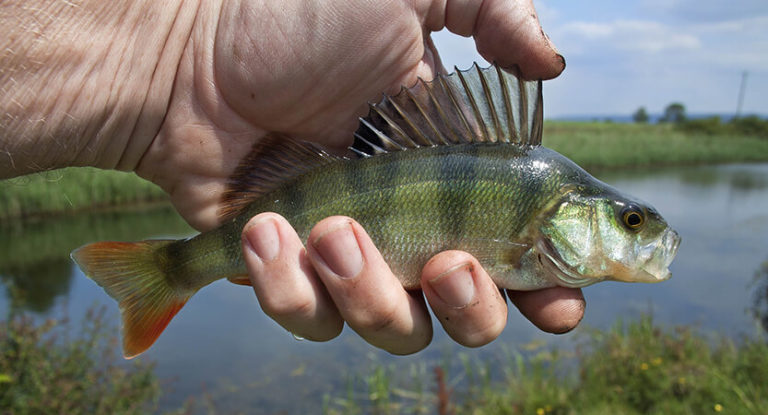It is difficult to say when a person first caught a fish with a tackle equipped with a hook with a bait. Our distant ancestors did not ask themselves the question of what to fish for, because they caught them in ways that ensure the maximum catch, without looking at the ethical side of the issue: for them it was a matter of food and, therefore, survival. Gradually, fishing from a method of obtaining food turned into a hobby, and great-grandfather’s methods (in particular, fishing with a net) were recognized as poaching.
Most of our contemporaries consider fishing as a hobby, on an amateur or sports level. This means that tackle with hooks has become the most widespread. And one of the main issues of concern to anglers is the choice of the optimal bait. And here there are no universal recipes: even fish of the same species at different times of the year and in different bodies of water prefer different baits.
Here is an overview of the content of this tutorial, feel free to jump to any section you care about:
For more fishing instructions, take a look at these popular Trizily links: Best Bass Fishing Lures, Best Fish Finders.
- Beginner’s Guide To Catfish Fishing
- Choosing A Fishing Line For Spinning Reel
- How To Choose A Spinning Rod (Complete Guide)
General recommendations for choosing a bait
Even people ignorant of fishing from the word “absolutely” know the fundamental principle of choosing the optimal bait. Peaceful representatives of the ichthyofauna prefer to eat bread-gruel, in extreme cases, larval worms, but fish of predatory species eat only their own kind or the aforementioned trifles of animal origin.
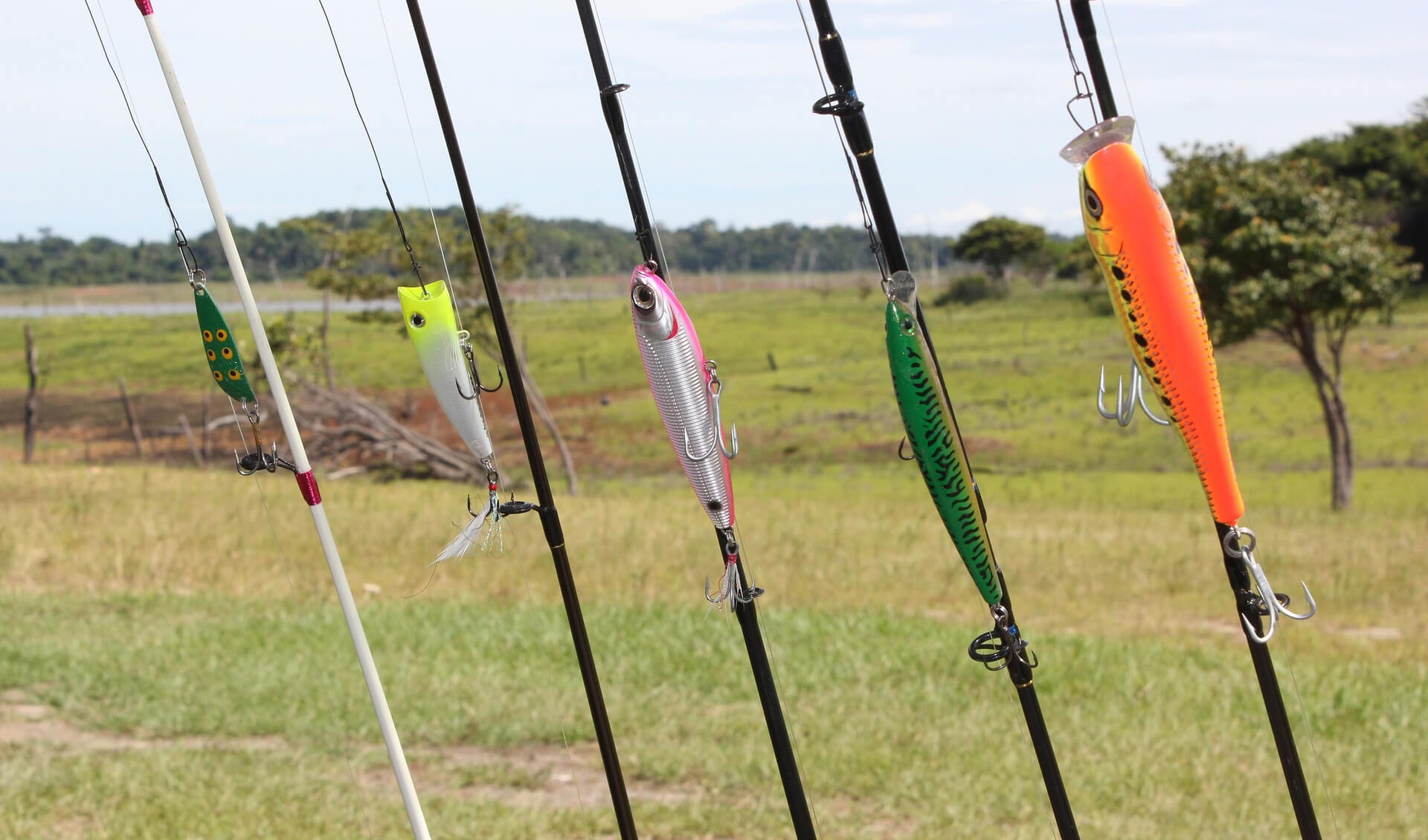
Therefore, when fishing for representatives of the cyprinid family (they are the main “peaceful population” of our water bodies), bait of plant (nozzle) or animal (bait) origin should be used. The predator is caught on live bait (that is, juvenile fish), other bait or all kinds of bait, produced in an industrial environment or by handicraft.
General recommendations for choosing a bait can be expressed as follows:
- Old-time fishermen have experience fishing in a specific water body. Before fishing, it is worth consulting with fellow fishermen what they used when fishing in a particular body of water. Despite many anecdotes on this topic, the fishing brotherhood does exist.
- During spawning, the fish practically does not eat. Immediately during this period, representatives of the ichthyofauna are exclusively interested in reproduction, so fishing often turns out to be ineffective, regardless of the degree of “delicacy” of the bait. Do not forget about the restrictions during spawning.
- For river fishing it is better to use a nozzle with a dense consistency. This is especially true for rivers with a rapid current: the soft nozzle will instantly be washed off with water.
- The bait on the hook should be different from the bait. Groundbait serves to attract fish to a given area, but it bites more intensively on something that differs from the total mass. For example, carp will be happy to find a kernel of delicious corn in a cloud of mud from cake and porridge.
- Many interesting things can be bought in the store. If there is no desire or time to mess around with preparing the bait yourself, you can buy everything you need in the store: from all kinds of ready-made cereals with various flavors and carp boilies to larvae and earthworms.
Now let’s dwell on specific lures, baits and artificial lures, which are most often used for fishing.
Plant-based baits
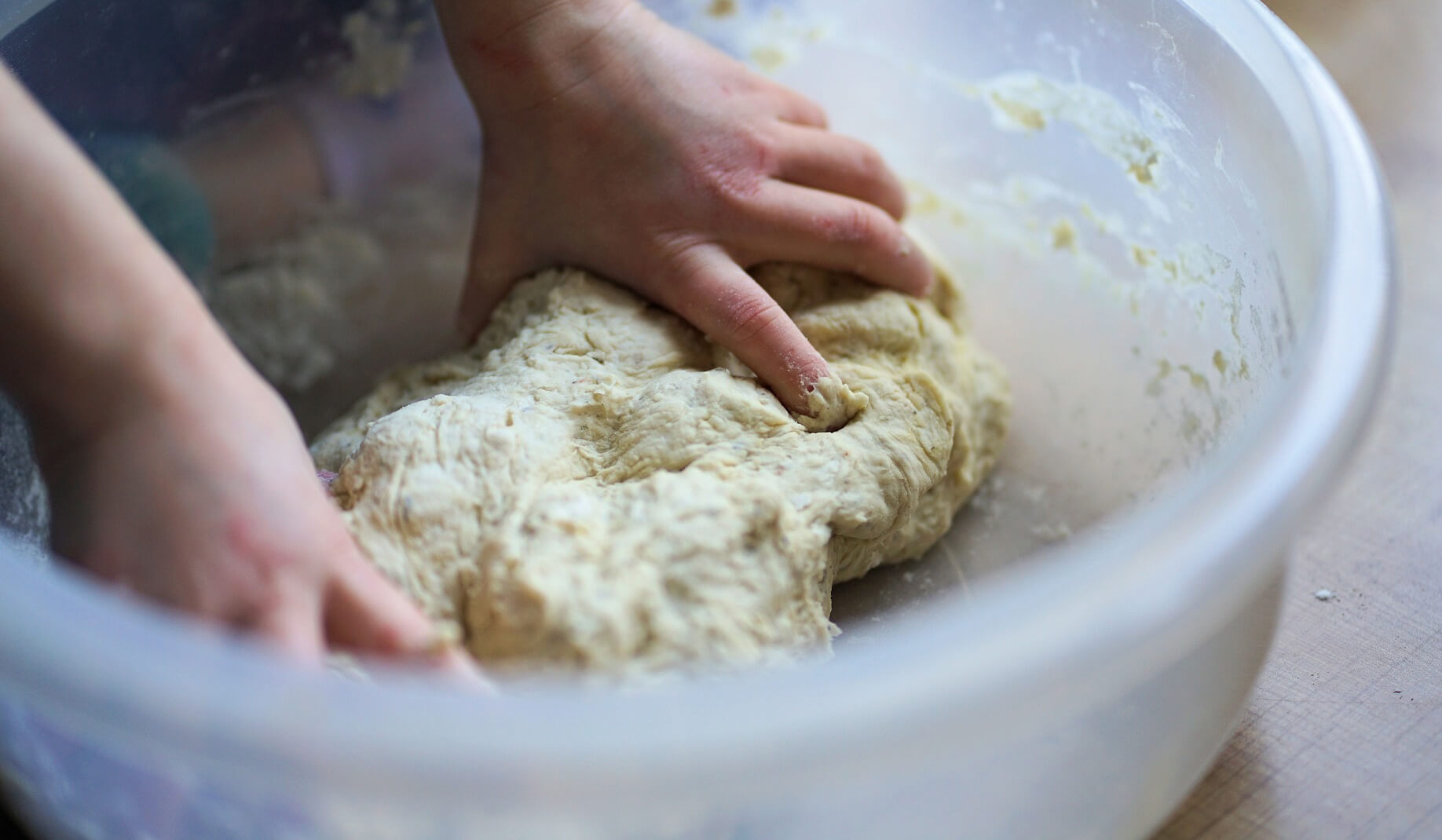
On baits of plant origin, they catch exclusively peaceful fish, the lion’s share of which in the reservoirs are representatives of the carp family. The most commonly used:
Bread . It is best to take rye bread without additives, but if you don’t have it, you can also use unsweetened wheat bread. Usually, a mass of crumb is kneaded, but sometimes it is hooked on a hook not crumpled, and pieces of rye bread crust are also used. Unrefined vegetable oil in a ratio of 1 tbsp acts as a universal binder and flavoring agent in one bottle. spoon for 1 kg of bread. Seasoned anglers use everything as a flavoring agent, from medicines to cocoa, but a beginner is better off using classic anise – the main thing is not to overdo it. Many interesting synthetic flavors are sold in specialty stores.
Dough . Even people far from cooking know that the basis of any dough is flour (wheat or rye) and water. To increase the elasticity of the mass and make it more attractive to fish, you can add a raw egg and vegetable oil to the dough. If desired, the dough can be dyed with synthetic or natural dye. A little trick: instead of special dyes and flavors, experienced anglers sometimes use all kinds of soda, for example, cola, when preparing dough, partially or completely replacing water with them. You can immediately stick balls out of the dough and scald it, but many do not bother about this, simply pinching off the dough from a piece and forming balls while fishing.
Chatterbox . A chatterbox, in fact, is a batter or semolina of a similar consistency. A flour talker is prepared right on the spot, on water from the same reservoir: just knead in a mug. If desired, in a similar way, you can prepare a semolina chatterbox by steaming it twice with an exposure of half an hour with warm water. As a result of the manipulations, a pasty mass should be obtained, which is literally wound on a hook with a syringe, and in his absence – matches.
Pasta . Pasta is a classic of the fishing genre, and most often ordinary “stars” or “horns” are used. The pasta should be dense: it is better to undercook a little than overcooked, otherwise it will fall off the hook. It is good to use peas, corn, pearl barley, or animal bait to attach the pasta to the hook.
Grains of cereals . The most common option is steamed wheat grains , less often rye or oats. Pure steaming with boiling water should be combined with a long infusion, therefore it is often combined with short-term cooking. If there is no time at all, you can prepare a nozzle in a thermos. Steamed cereals are more often used as bait, but bream and roach are also good for the hook they bait.
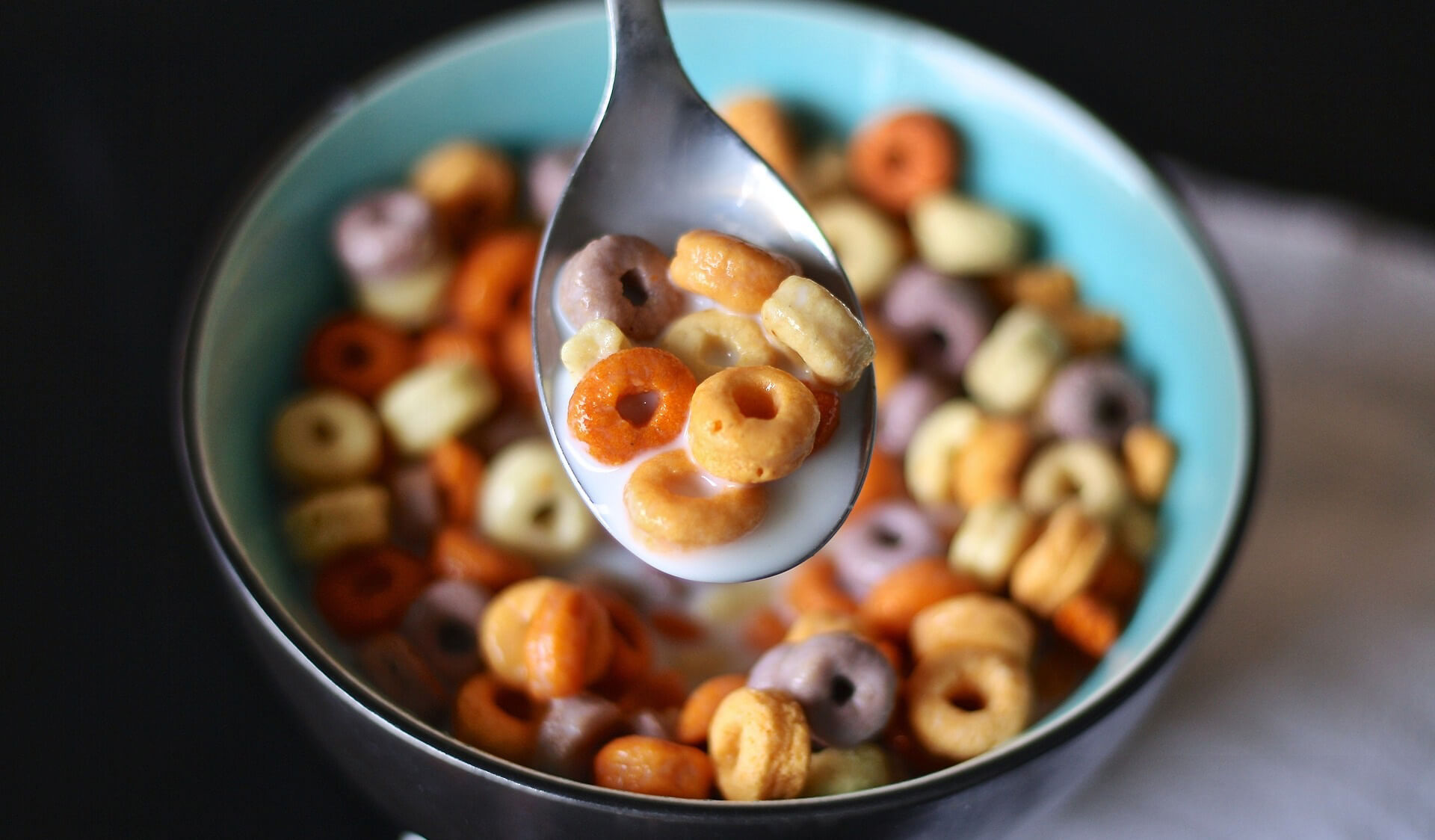
Cereals . As the gold standard for groats in relation to the nozzle, one can call the well-known penny barley . It can be boiled (1: 2 ratio with water, until it boils completely), or you can steam it in a thermos. Barley is a versatile and very easy-to-use nozzle, ideal for a beginner.
Corn . For bait, they use hominy, that is, corn porridge, but this option is not suitable for a bait. The ideal option would be milk ripeness corn (the older one can be slightly boiled right on the cob), and in its absence – canned from a can.
Peas . With peas, the situation is the same as with corn: in the season it is better to use fresh peas, you can scalded, outside of it – stop at the canned version. It is also possible to cook with preliminary soaking, but it is difficult to achieve optimal softness: either the peas are too hard, or too boiled.
Potatoes . Fish are rarely caught for potatoes, but sometimes rather large specimens of crucian carp and even carp go for it. Only boiled young potatoes are used: later they will become too crumbly and will simply fall off the hook. Small, bean-sized potatoes are ideal, but larger ones can be cut.
Carrots . Carrots are simply boiled right in the peel, peeled and cut into cubes. It is sometimes preferred by representatives of the carp family when fishing with bottom tackle.
Berries and fruits . You cannot imagine what representatives of carp breeds sometimes peck on: currants, strawberries, blueberries, pieces of watermelon, melon, pear, unripe plum, and so on!
Oilcake . The most common option is sunflower cake, but hemp, rapeseed or flaxseed is fine. This cake can be obtained on your own, but it is better to buy “makuha” (a kind of pancake from under the press) in production. It should be borne in mind that it must be fresh, with the smell of oil. Oilcake is used in special tackle, but some anglers consider them unsportsmanlike. There is an alternative, for example, for donkey and rubber bands: the top is cut into cubes with a side of about a centimeter, cut on the edges of the cut, tied crosswise with a soft thread (or tied with rubber bands such as pharmaceutical or for weaving) and a hook is put under the sling. The bait creates dust and spreads an appetizing oil aroma for carp fish.
Boilies . Boilies are special carp lures of a characteristic color and shape. They are usually used by feeders, but nothing prevents them from using boilies for other tackle, for example, an ordinary fishing rod with a float. Boilies is a shape that implies a dyed and scented ball for a hook attachment. Moreover, its content can be arbitrary: all kinds of flour, crushed cereals, oilcakes, and so on in various variations. Ready-made carp boilies can be bought in a specialized store, but they are quite expensive. With a little experience and diligence, you can cook boilies at home (housewives in the kitchen do much more complicated things), but completely green beginners are advised to use the store option.
Bait of animal origin
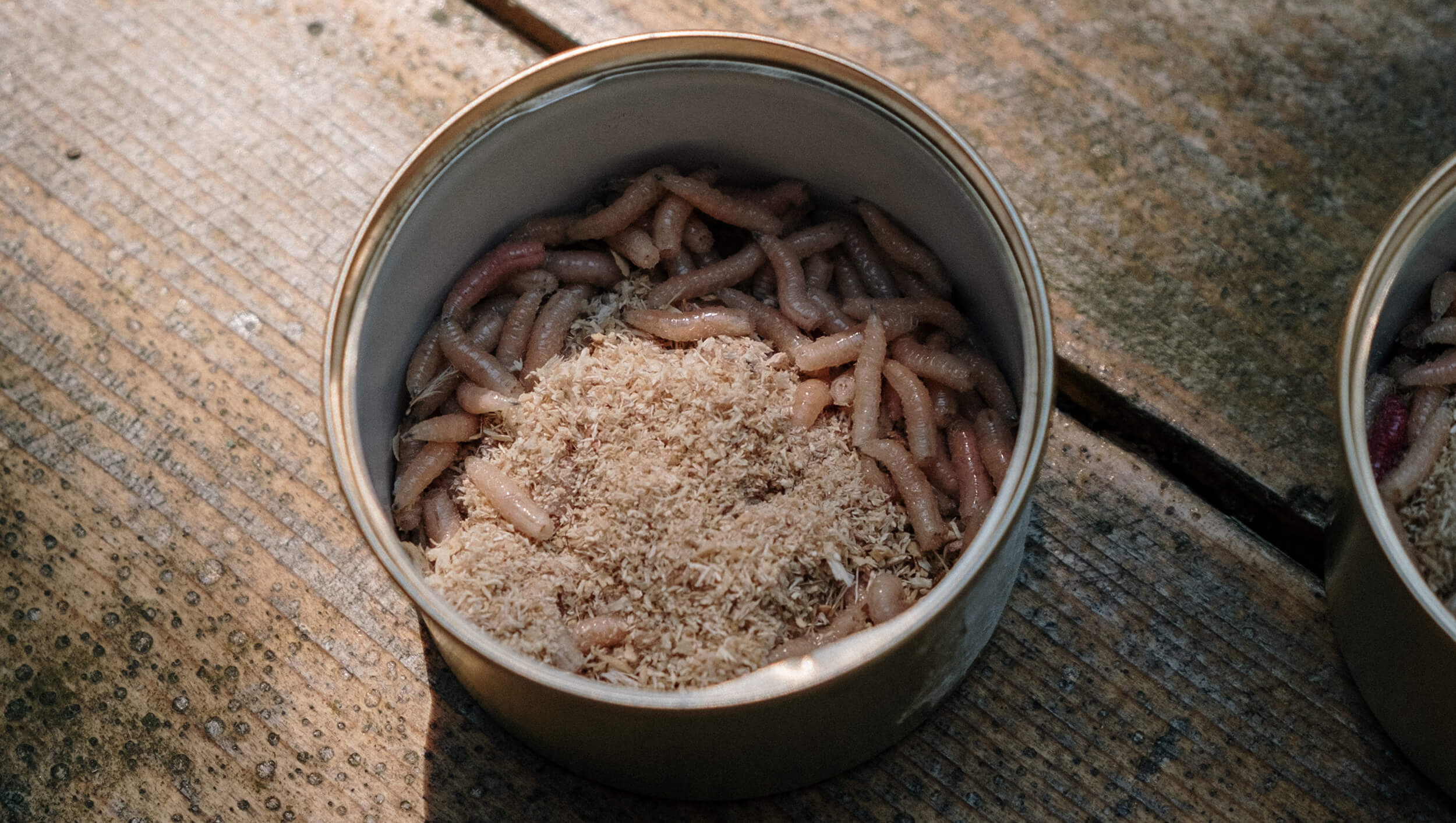
Predatory fish are caught only with bait of animal origin. They are also taken by peaceful representatives of the ichthyofauna, because this category also includes worms, larvae, insects, which cyprinids do not disdain at all.
Let’s sort it out in order:
Earthworm . A type of earthworm is an earthworm (creeper), which crawls to the surface immediately after rain. This is a classic bait highly respected by anglers.for centuries. You need to look for an earthworm – oh, surprise – in the ground, and wet, you can in your own garden. If you want to do without a shovel, you can lift a piece of polyethylene that has been lying on the ground for a long time, turn over a couple of stones or logs. Some anglers prefer to use a freshly dug worm, but experts recommend cleaning by placing the worm in sawdust, or better, in vegetable oil. All peaceful fish take this bait, as well as small predators – perch, ruff, rotan. There is a chance to catch even a solid pike, especially during the period of changing teeth, when it prefers small and soft prey.
Dung worm . Dung worm is a type of earthworm. It lives in a substance that is understandable by its name – rotten manure heaps, compost pits and other less appetizing places. A dung worm is used very often as a hook attachment: its striped color and the smell released at the moment of stress attracts both carp and small predators. However, fishing requires a lot of worm (it quickly loses its mobility), and it is not very pleasant to catch it, therefore, the question arises of storing this type of bait . It is advisable to place the dung beetle in a container with earth flavored with the remains of tea leaves: the tannin contained in it invigorates the worm and prolongs its life on the hook.
Maggot . Before us is a fly larva, a very worthy and respected bait by fish. It is quite easy to get maggots in the warm season: you just need to “forget” a piece of meat or fish in the open air. After the appearance of white eggs, the bait can be placed in a container with a lid (preferably transparent so that you can follow the process without opening the jars) and placed in the shade. Removing the larvae from the container is an extremely “fragrant and pleasant” process, so most city fishermen prefer to buy a clean, sawdust, maggot in the store.
Wood beetle larvae . The most common representative of wood beetles is the bark beetle; its larvae are an exquisite delicacy for representatives of the ichthyofauna, even with a very poor bite. However, they are very delicate and short-lived. And getting them is sometimes problematic: you will not find them under every piece of bark broken off from a rotten tree. But there you can find another, larger, dense and tenacious option – the larvae of the barbel or the golden beetle. Also quite suitable bait, for example, for roach or bream.
Caddis flies . In some areas, the caddis larva is called trichoptera – it is literally sewn into a house from its own “yarn”, sand and small stones. Larvae can be found in clear, stagnant water or in a slow current, more often on pebbles, shell rock or sand. The fish should be caught on a larva peeled from the shell, one per hook is enough.
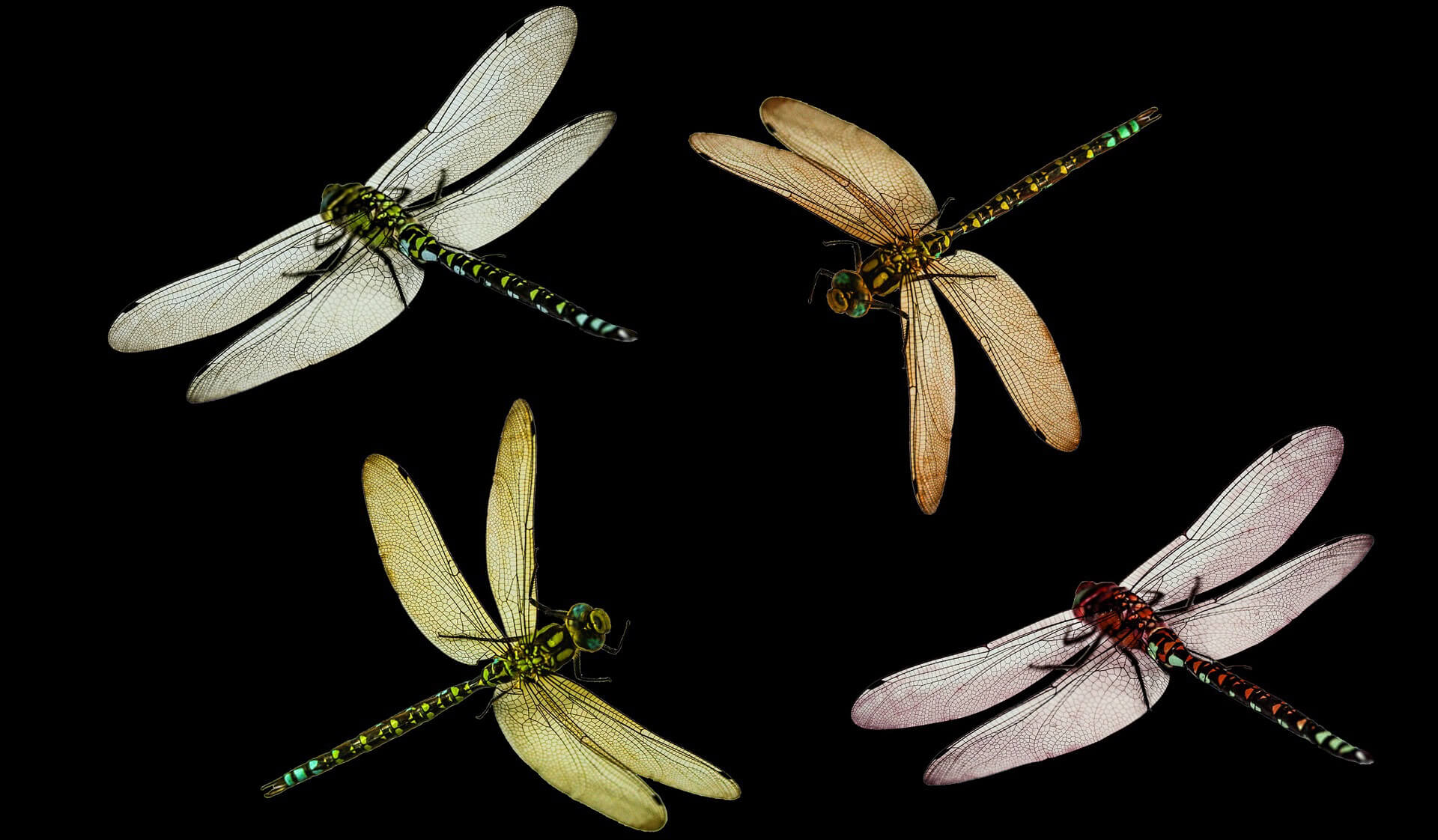
Dragonfly larvae . Dragonfly larvae are real predators: they are large and voracious, eating insects, tadpoles, eggs and even small fry. You should look for larvae in a viscous bottom, or in sedge. Even a predator takes a dragonfly larva, and it is convenient to use it, for example, when fishing with fly fishing .
Bloodworm . The famous bloodworm, a lure for many representatives of the ichthyofauna – the larva of the bell mosquito! Bloodworms are gentle, fall asleep quickly, but the fish adores bloodworms, especially fresh ones. For bottom gear, it is not suitable, but for a float or winter nod fishing rod – just right. Several larvae are put on the hook at once. Bloodworms are obtained in the coastal silt, washing it through a fine sieve. It is advisable to use freshly harvested larvae, it is allowed to overexpose for several days in the refrigerator, but not in the freezer!
Insects . Adult insects are rarely used as baits: not all fish like hard chitin. But this does not exclude, for example, the use of a grasshopper or May beetle in a fast current: they take cyprinids with powerful pharyngeal teeth: asp, chub, ide. Predators do not disdain such baits either. All representatives of the ichthyofauna, including small carnivores and herbivorous fish like silver carp, are good for the mayfly butterfly and its larvae.
Mormysh . Mormysh is a small (up to 2 cm long) freshwater amphipod crustacean that feeds on all sorts of remains. Mormysh is ubiquitous, but most of all near shady shores, in coastal thickets, in swampy areas, and in winter it rises directly under the ice. Mormysh is harvested on straw or spruce branches: we lower the armful into the water, after a while we extract and select the crustaceans huddled there. For this purpose, you can use burlap or natural bast, previously sprinkled with flour.
Juvenile fish . The most important bait for catching a predator is live bait, that is, fry or juvenile fish. Live bait is used mainly on “one cast” gear. As it can be used juvenile of any fish, from the top water or bleak to perch or pike perch. There are many ways to catch live bait: with a float rod, with a piece of cloth, with a spider, and so on. The larger the estimated trophy, the more live bait will be required. The same category includes tadpoles and frogs, which are also sometimes used as bait.
Artificial bait
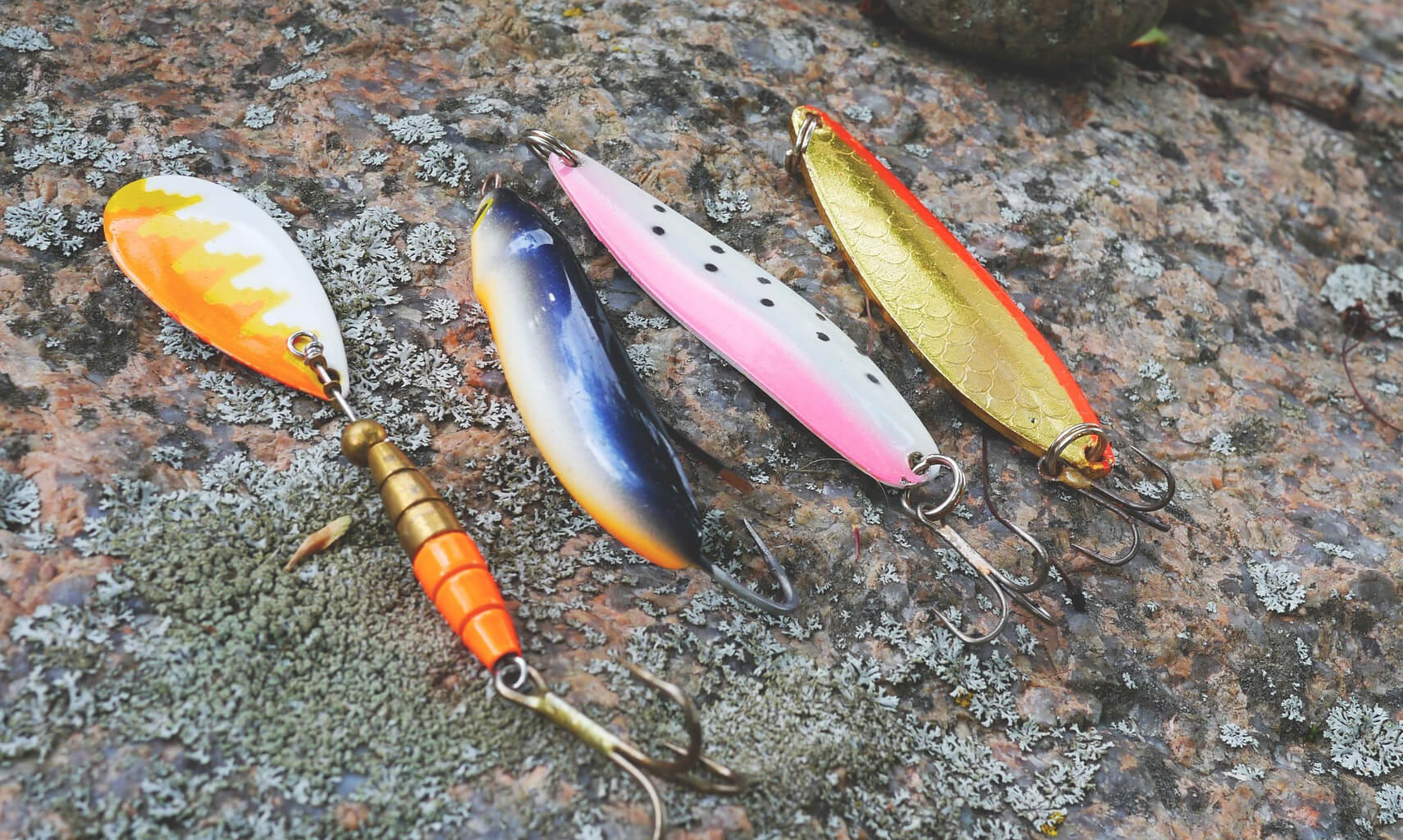
Artificial bait is a structure made of something that has never lived or grew (metal, plastic or other polymeric materials). On such tackle you can fish of various types, both predatory and peaceful – it’s only a matter of choosing a constructive solution and fishing method.
Spoon . The classic version of artificial bait, known for a long time, is now represented by many models. They are united by material: baubles – from the word “shiny”, in this case, metal. Other plastics structures usually fall into a different category. There are lures for winter and summer fishing. Summer options are designed primarily for a variety of spinning fishing methods .
In turn, spoons are divided into oscillating and rotating – according to the “manner” of their behavior during the drive. The classic version is hesitant, they appeared earlier, but they are still successfully used. The most comprehensive is their classification according to fishing methods: casting – for the maximum distance, trolling – for the method of the same name, “non-hook” – for fishing in thickets and algae islands, fast sinking – for “vertical”. Spinning spoons (in common parlance – “spinners) are a natural evolution of oscillating analogs. The rotation that attracts the predator is provided by means of a weight and a movable petal.
Wobbler . This option is also intended exclusively for predator fishing. He not only outwardly resembles a small fish, but also plausibly mimics its behavior. A classic wobbler is a natural shape and color, predominantly polymeric materials (all kinds of plastics) and two “tee” hooks: in the tail and on the “belly”.
There are many varieties of wobblers that are designed for different fishing methods (mainly spinning, but not only) and require mastering various wiring techniques. Depending on the design, they are able to walk from side to side, move along a broken path, splash, bounce and even make all kinds of sounds. The most popular among spinning players are rattlins, poppers, walkers and others like them.
Balancer . The balancer is a type of wobbler designed for vertical fishing. It is mainly used for winter fishing, but sometimes it is also used in free water. The balancer is one of the most catchy lures suitable for obtaining solid trophies, but in this case, much depends on the skill of the angler – how skillfully he can play with a nod rod.
Marmooska . Another tackle loved by fishermen for many decades is the jig. The secret of its catchability lies in the fact that it is able to imitate the behavior of the amphipod crustacean (“mormysh”), which is the basis of the diet of many representatives of the ichthyofauna in winter. Fish of various species, both predatory and peaceful, are caught on the mormyshka – in winter, not a single representative of the ichthyofauna does not disdain with amphipods. These lures are made of metal and differ in a variety of shapes: “pellet”, “drop”, “witch”, “oatmeal”, “goat” and so on. There are options that involve the additional use of an attachment, as well as special jigs for summer plumb fishing.
Devil . The devil is a variation of the jig that has gone far enough from the prototype to be rendered into a separate type of tackle. A distinctive feature of this tackle is its characteristic shape, vertical position in the water, and equipment in the form of three hooks.
Egg . Before us is a rather fresh invention, which is a cross between the aforementioned spoons and “devils”. The peculiarity of this design is in the free fastening of the hooks, which in the water create the illusion of the movement of the legs of a dainty water trifle.
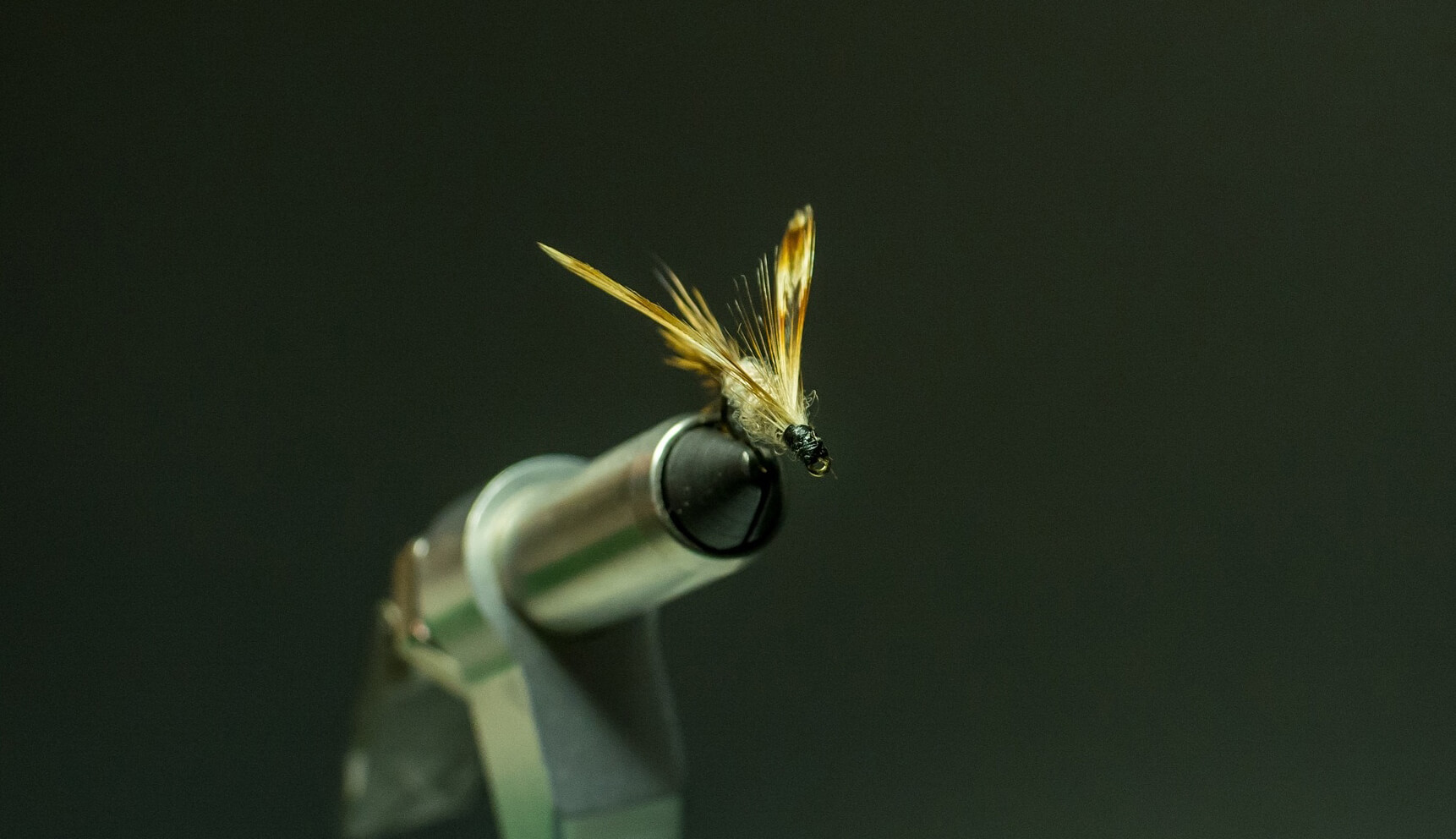
Fly . “Fly” (officially – “streamer”) is a bait made to imitate the appearance of an insect (fly, dragonfly, beetle, and so on). Most often it is used by fly fishers, but spinning fishers do not disdain fly fishing. A fairly broad class of streamers is divided into two main categories: “dry” (on the surface) and “wet” (for fishing in the water column).
Active “silicones” . Silicone options have appeared on the market relatively recently, making a splash. Silicone is durable and flexible, so you can create the most intricate shapes from it, endowing them with special skills. Active silicone lures are able to perfectly imitate the movements of prey attractive to a predator practically without the participation of an angler. The most popular options among spinning players are twisters and vibro-tails. They are used in tandem with special jig heads consisting of ball weights and hooks.
Passive silicone baits . “Silicones” of this type outwardly imitate not fry, but other aquatic inhabitants: crustaceans, worms, tadpoles and so on. They do not have moving elements, therefore, to increase the attractiveness, special posting techniques are used, including manipulating the rod and reel.
Edible rubber baits . In fact, edible rubber is the same silicone, but with food additives that give an attractive taste and aroma to representatives of freshwater ichthyofauna. Lures made of edible rubber and silicone have found the widest application: they are used in bottom tackle, float rods, when fishing in a plumb line.
What to fish for different types of fish?
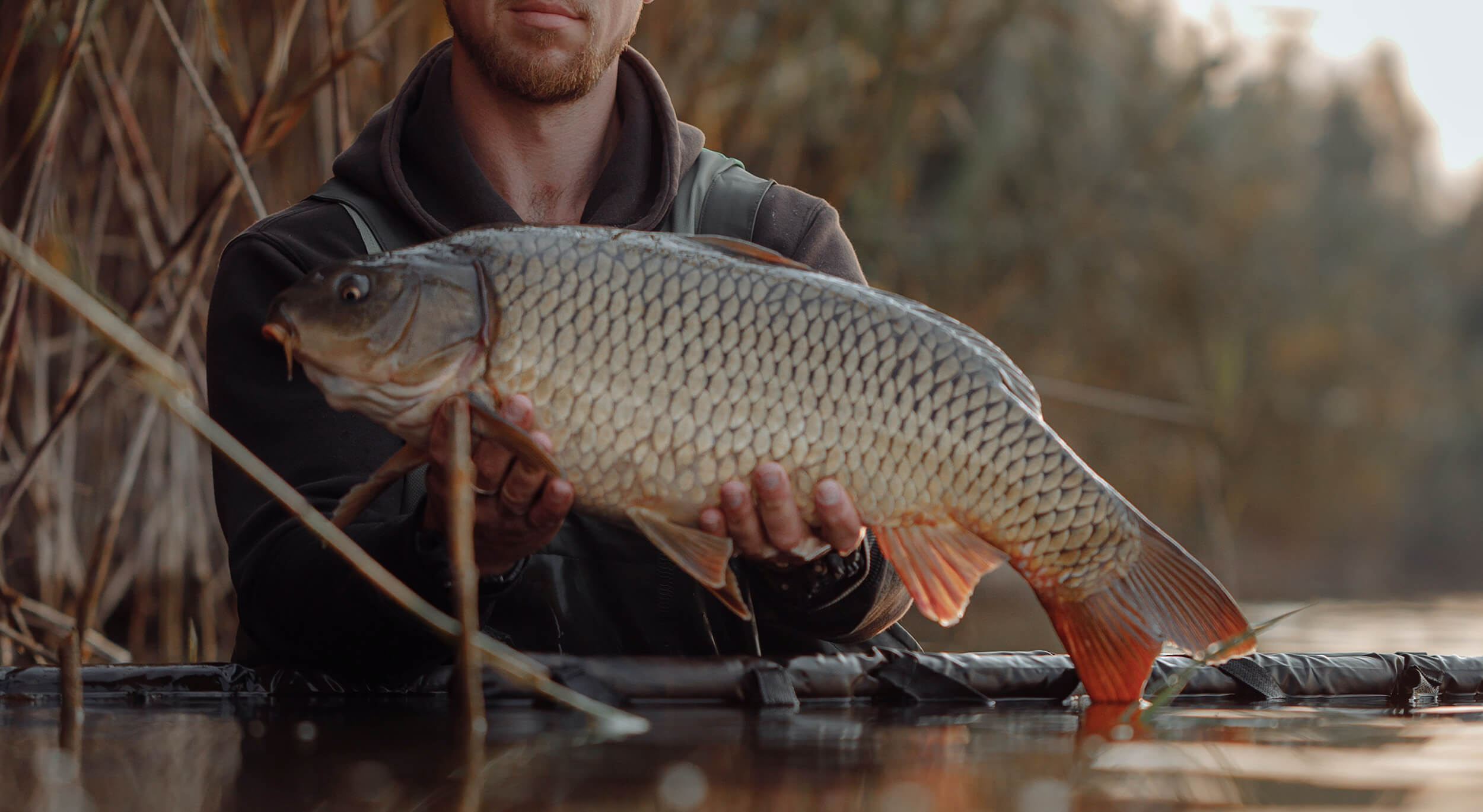
An experienced angler always has in his arsenal a lot of baits and lures, and sometimes quite exotic ones. The fact is that if on the same reservoir yesterday you effectively used maggots, for example, to catch roach , it is not a fact that today it will not suddenly give up “meat”, having switched to baits of plant origin. And in the conditions of a total lack of bite, you need to try everything that comes to mind – from boiled carrots to grasshoppers.
Crucian carp . This is perhaps the most numerous civilian inhabitant of our lakes and ponds. Most of all, crucian carp loves stagnant water and a soft muddy bottom, but it can also be found in rivers. He is picky in the choice of food: he can be safely called omnivorous. An ordinary fishing rod or carp rod of any design is ideal for catching it : the main thing is that the bait is located closer to the muddy bottom, but not buried in it. On the hook, you can put bread, boiled or steamed grains of cereals, maggot, “dung beetle” – everything that is in the arsenal.
Roach . Before us is another representative of the carp family, which is extremely common in our reservoirs. Unlike crucian carp, she does not like poking around in the bottom mud so much and prefers cleaner and clearer water – roach is practically not found in ponds. The best choice is the traditional fishing rod, familiar to everyone (in winter – nodding), and it is better to plant a worm, bloodworms, tree beetle larvae, as well as crumb, prepared cereal grains, corn, and so on on the hook.
Herring . Herring is an anadromous predator: it enters fresh water only for spawning. Most of it is in the Volga, Don and the largest tributaries of these rivers. The herring season starts exactly in the middle of spring and lasts almost until the end of summer. This fish is caught on a spinning rod, using a special herring spoon.
Bream . Large fish of the carp family. Bream is obtained using fishing rods, feeders , rubber bands. The bite of the bream looks very impressive: it immediately swallows the bait and floats up, beautifully laying out the float on the surface of the water. When capturing large specimens, the use of a landing net is mandatory. It is difficult to say what bream will prefer in a particular case: it can be pasta, dough, milk corn, pasta semolina, or “dishes” of animal origin: larvae, worms, insects.
Pike perch . A representative of the perch family, that is, a real predator. He hunts in packs, therefore, with luck, you can get several decent specimens at once. For passive zander fishing, live bait (fry, frog) is an ideal option. Most often , spinning is used to catch pike perch , as bait – spinners, wobblers, all kinds of silicone options. In winter, it is caught mainly on girders and nod rods, in the first case using live bait, in the second – jigs and balance weights .
Pike . Before us is the recognized queen of our reservoirs, a very productive and impetuous hunter, capable of swallowing prey that is slightly smaller in size. The pike hunts alone, from an ambush, rushing at the fish swimming by. This is due to the effectiveness of the use of tackle for fishing in the wiring, for spinners , wobblers and “silicone”, but sometimes good specimens come across and on the bottom tackle equipped with live bait. In June-July, a large pike can even be caught with a worm: the predator’s teeth change, and she prefers smaller and more delicate food.
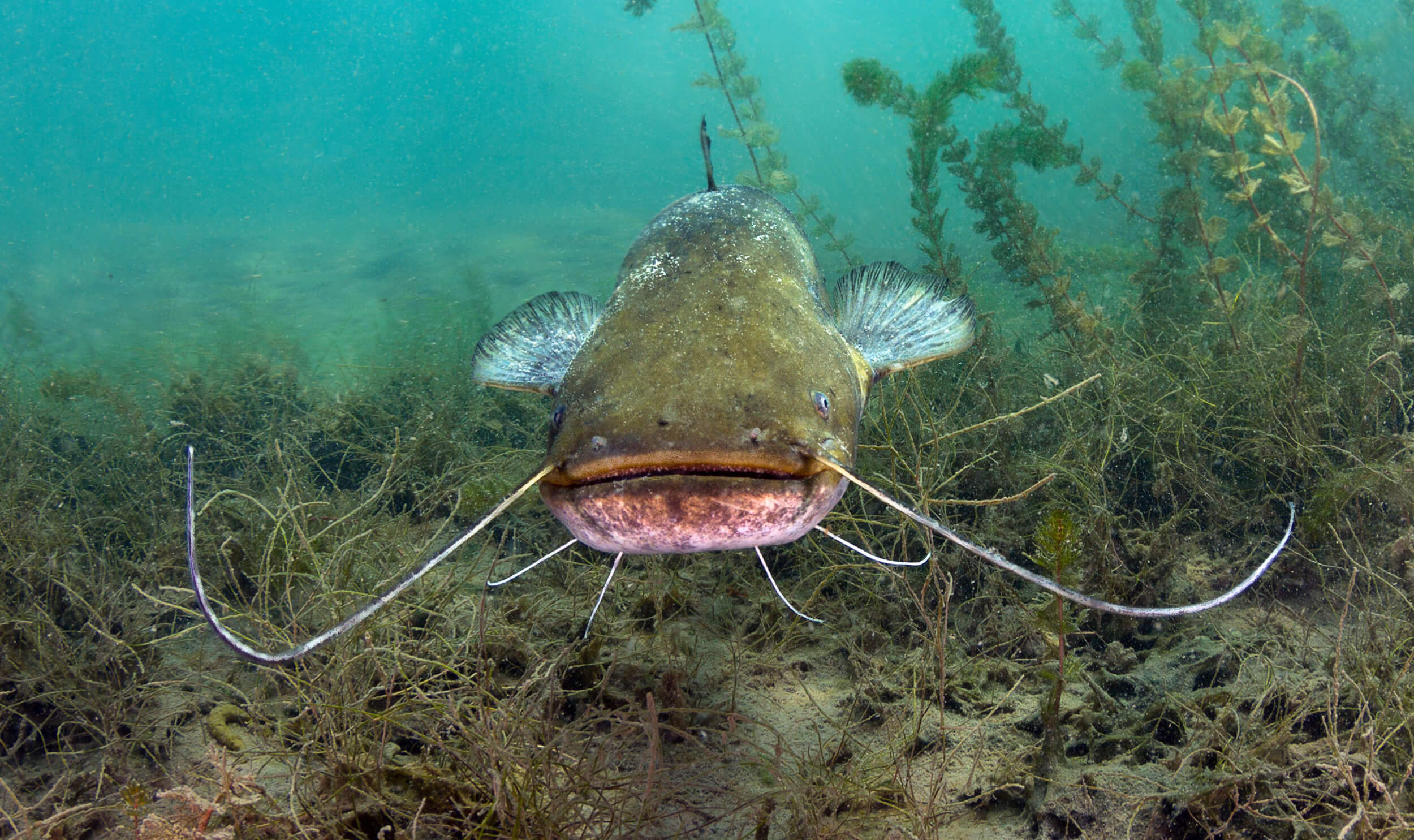
Catfish . The largest inhabitant of water bodies, a real freshwater giant prefers food of animal origin, and of the appropriate size. Catfish is an individualist who prefers to spend time in the deepest pools or thickets, from there attacking gape prey. For catching catfish on bottom tackle they use live bait, frogs, pieces of meat (even better “with a smell”). Sometimes catfish are effectively harvested on a spinning rod equipped with a spoon or wobbler of the appropriate size.
Asp . Despite the close relationship with the peaceful carp, the asp is a real predator and a very successful hunter. It hunts surprisingly spectacularly: it hits with its tail, jumps out of the water, stunning the fish swimming by. Then he swiftly swallows the prey, grinding it with powerful pharyngeal teeth. Taking into account the habits of a predator, a wiring rod or spinning rod equipped with a lure, wobbler or vibrotail will be the optimal tackle.
Carp . Before us is a valuable commercial fish, widely grown artificially. Despite the extreme gluttony and omnivorousness, it is quite difficult to attract carp. To catch it, both match and ordinary float rods, feeders and any bottom tackle of sufficient strength are used. As bait, cereals, steamed cereal grains, bread are used, as a nozzle – the same, plus pasta, dough, cake, bait of animal origin, as well as special carp boilies of various compositions. The choice of a nozzle for carp is a very difficult task, individual depending on the reservoir, the season and a host of other factors.
Perch . The ancestor of the perch family is usually small, but very gluttonous. The perch hunts in flocks, swallows prey of suitable size at once, and does not intercept in the manner of a pike. For winter fishing, nod rods and girders are used, in summer – spinning, float rod , the whole range of bottom rods. In any season, small live bait, worms, larvae, tadpoles, frogs are relevant for passive gear. For active fishing in winter, jigs and balancers are used; in summer, this fish can be caught with lures, wobblers and silicone.
European Carp . This is, in fact, a wild carp, habits and appearance are very similar. It is of commercial importance and inhabits most of the deep rivers and stagnant water bodies. The carp is unpretentious in food, eats all sorts of water trifles, sometimes not disdaining algae. They catch it on float rods and bottom rods of all types, and the main requirement is the presence of a strong leash and large hooks made of hardened steel. Worms, maggots, bloodworms, steamed cereals, barley, boilies, pasta and so on are baited on hooks.
Goby . Fish, which has a lot of varieties, different both in type and way of life. The freshwater goby inhabiting mid-latitude water bodies is called rotan. He is carnivorous, but he can be called not a hunter, but rather a scavenger. Considering the way of life of a bull, it is better to catch it on all kinds of carp rods, but due to its voracity it often turns out to be caught with a fishing rod or even a spinning rod, although the angler expects a trophy more decently. Most of all, the goby is attracted by dung beetles and creepers, but he does not disdain mormys, larvae and even small live bait.
White cupid . It is mainly bred artificially and is often the subject of trophy fishing. This fish of the carp family leads a lifestyle characteristic of its relatives and feeds mainly on all kinds of small living creatures. The selection of bait for cupid is an extremely difficult task even for a seasoned angler. Cupid respects the tiger nut boiled in syrup more than anything else (preferably warm), but sometimes he is attracted to corn, peas, carp boilies or the most ordinary worm.
Beluga . It belongs to the sturgeon family and is classified as an endangered species, therefore, amateur catching is possible only in specific time intervals in certain places where there is no risk of causing irreparable harm to the population. Mostly these are commercial water bodies, licensed fishing. It should be borne in mind that the age of fish of this species can be calculated in centuries, therefore, the size of individual individuals amazes the imagination. For catching beluga, they usually use so-called “carp” rods, braided cables and triple hooks made of hardened steel, and the bait is a live bait of appropriate sizes.
Guster . Inhabits rivers and lakes of middle latitudes almost everywhere. Outwardly, it resembles a miniature bream (inexperienced fishermen sometimes confuse them). Guster walks in flocks and finds food in the bottom layer. The main tackle for catching silver bream is a traditional fishing rod, but it can also be found on all types of bottom rods. As bait, you can recommend bloodworms, caddis flies, worms (including dung), maggots, as well as properly prepared seeds of cereals and legumes.
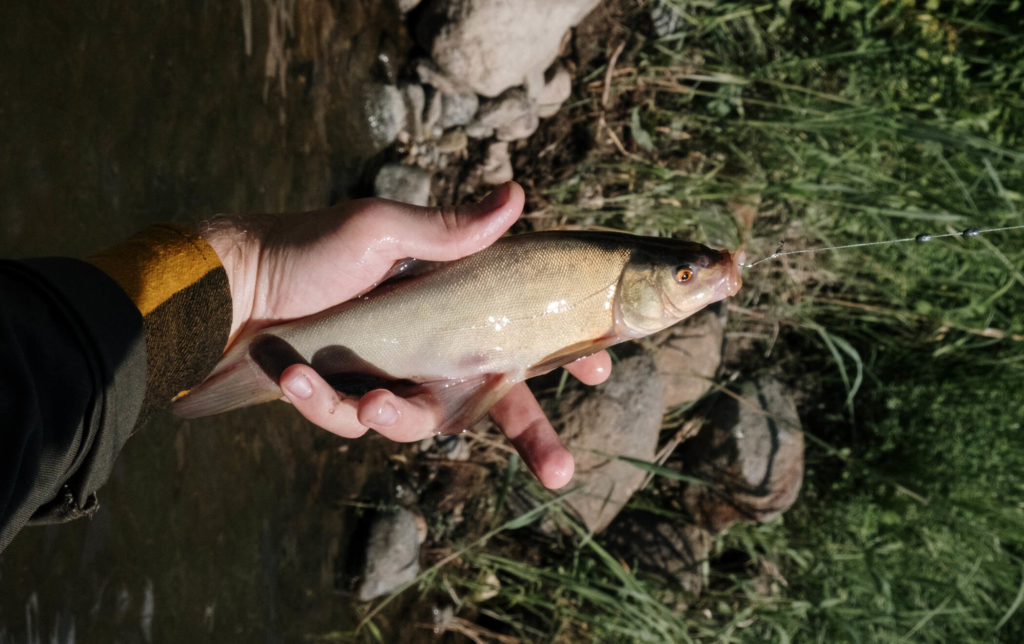
Tench . The tench, which runs in the thickets of reservoirs, has very tasty meat, but it is protected not only by “armor-piercing” scales, but also by the cunning of this representative of the ichthy kingdom from the cyprinid family. They usually catch it with a float rod, classic or match, choosing places among thickets with a silted bottom. The tench, although gluttonous, is inactive, slowly “assesses the price” to the bait. The choice of bait depends on the food base of a particular reservoir, but in the spring, after spawning, tench goes well for bloodworms, worms, leeches, maggots, and in summer you can try to fish this fish even with pearl barley.
Ruffe . Despite its rather modest size, the ruff is classified as a predator and bites exclusively on bait of animal origin. Specially, the ruff is caught extremely rarely, perhaps for fish soup, where it is unsurpassedly magnificent, but it comes across on any tackle prepared for more solid prey. The mouth of the ruff is impressive, so it can easily swallow an impressive earthworm or a bunch of maggots.
Silver carp . For a long time, this representative of the carp family was a mystery for fishermen, even with solid experience, and was considered almost elusive. It’s all about the way the silver carp feeds: it filters water through the gills, simultaneously feeding on plankton. Previously, as a bait, they used mainly oilcakes left after pressing the oil, now technoplankton has also been added to the number of treats for silver carp. You have to experiment with baits: sometimes the silver carp favorably condescends to ordinary corn or peas, and sometimes it requires something exotic, like berries and fruit slices.
Chub . The chub is caught with the whole range of tackles and lures, because it is omnivorous. However, the chub is also selective depending on the season and the water body. According to the spring gluttony, this fish prefers animal food rich in protein: worms, maggots, insects. At this time, you can even catch it with a wiring method with a wobbler or a spoon! In summer, the chub tends to a lighter vegetarian diet, giving preference to properly cooked grains and legumes, bread, and sometimes vegetable greenery.
Common bleak. This small nimble fish, despite its modest size, often attracts the attention of fishermen – it is very tasty when dried. Common bleak walks in flocks in the upper layers of water, so it is pointless to use bottom gear for its extraction. A float rod is suitable, and you need to catch it at a shallow depth: the bleak snatches out insects that make up the basis of its diet right from the surface of the water. It is best to use a fly, real or artificial, as bait. Sometimes this fish can be caught with vegetable baits, but insects are still its food favorites.
Ide . The ide is very reminiscent of asp in the manner of feeding, and in appearance it is a giant roach. In the strict sense of this word, ide cannot be called a predator, because it is omnivorous. After wintering on ide, it is definitely better to go with bait of animal origin: worm, bloodworm, mormysh, any larvae. Sometimes he also takes artificial baits, sharply rushing at them during the posting. Ide is generally a decisive guy, he does not hesitate to take the bait that is tasty for him at the moment, which even ordinary bread can become in the summer.
Burbot . Burbot is a freshwater representative of the cod family, especially valued for its delicious meat and delicious liver. For fishing burbot in open water, bottom rods are mainly used, occasionally it also gets on spinning. The feeding behavior of burbot is characterized by a pronounced seasonality: for example, in the hot summer, it sinks to the bottom and actually does without food, in the spring it prefers worms and insects, and in the fall, fishing with live bait becomes effective. Do not forget that the burbot is a nocturnal predator, it practically does not show activity during the day.
Rudd . Outwardly, this fish is very similar to roach, but it is less common and is not colored more elegantly: it can always be recognized by its crimson fins. The rudd is caught mainly with a classic or match fishing rod, but sometimes it also takes a bottom rod. It is an omnivorous fish: you can catch it with baits like dung beetle, bloodworms, caddis flies, maggots, as well as vegetarian baits such as dough, bread, legumes or steamed wheat grains. Artificial baits are rarely used, but fishing with passive “silicon”, imitating larvae and insects, can be productive.
In one article, even the most voluminous one, it is difficult to cover the entire range of baits, baits and artificial lures, to describe the subtleties of handling them, their use for catching fish of various types, depending on the season and other factors. We promise to continue to delight you with new publications, where we detail the issues of using various baits. And now – as always: no tail, no scales – and great mood!

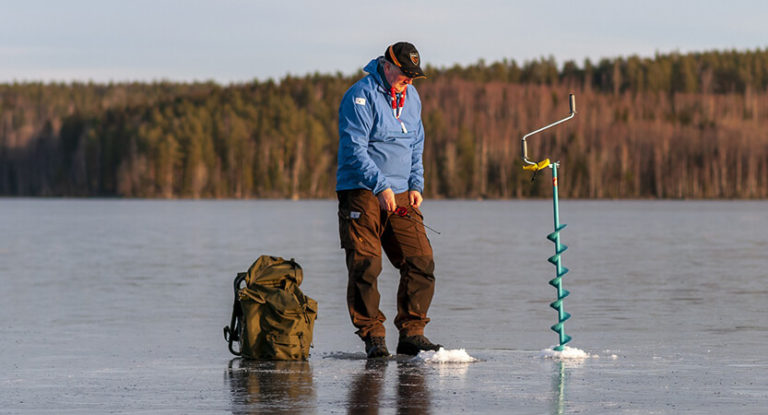
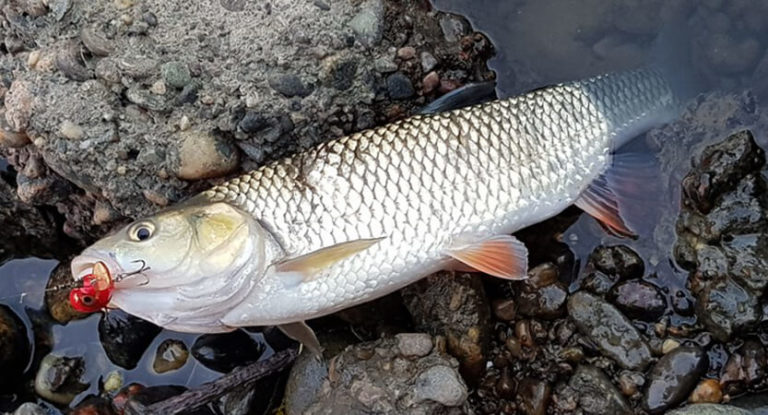
![The 9 Best Fly Fishing Forceps [ 2023 Update] 13 The 9 Best Fly Fishing Forceps [ 2023 Update]](https://trizily.com/wp-content/uploads/2022/03/best-fly-fishing-forceps-768x768.jpg)
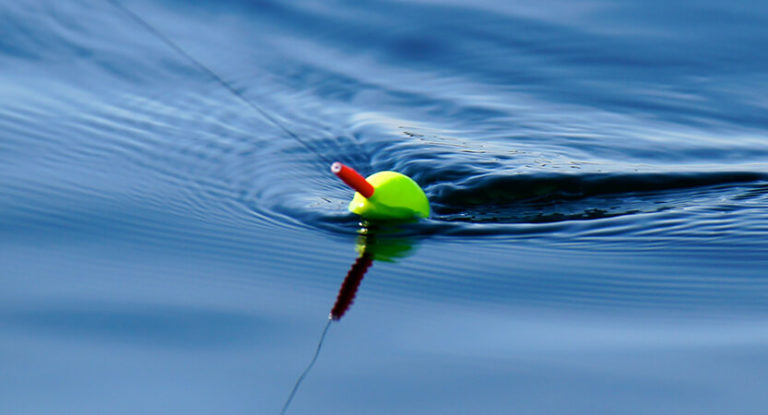
![10 Best Braided Fishing Line [Comparisons and Reviews] 24 10 Best Braided Fishing Line [Comparisons and Reviews]](https://trizily.com/wp-content/uploads/2022/03/best-braided-fishing-lines-768x768.jpg)
